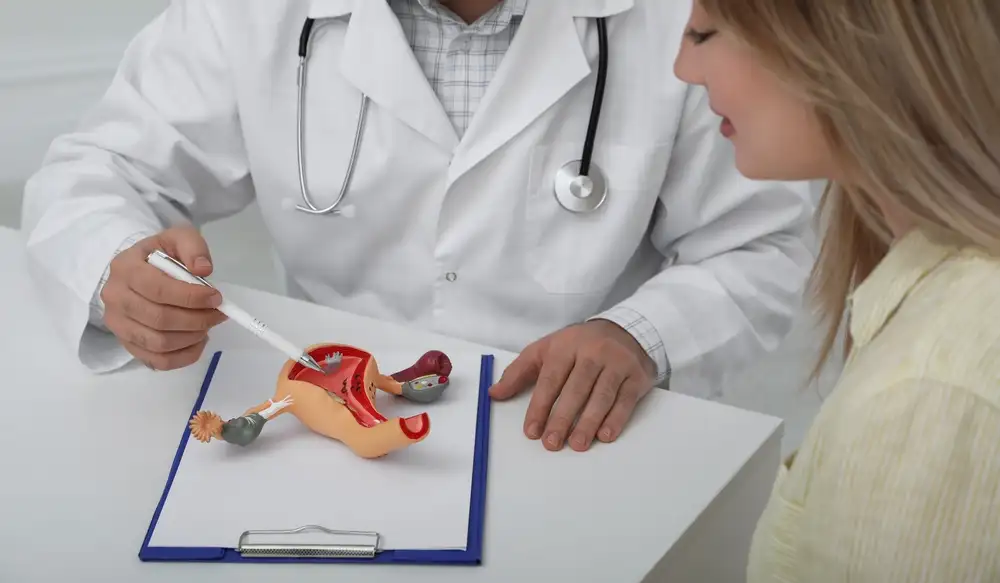
Hydrosalpinx at a Glance: Causes, Symptoms, and Treatment of the Disorder
Hydrosalpinx is one of the leading causes interfering with pregnancy or fertility in women. Any damage to the fallopian tubes is primarily associated with an untreated infection causing the disease. You need to take hydrosalpinx treatment from a top clinical service provider like Bloom IVF.
Let's check out all the details of hydrosalpinx symptoms, causes, and treatment.
What is hydrosalpinx?
A prevalent question that most doctors are being asked is: What is hydrosalpinx? It is a condition in which fluid collects in one or both of your fallopian tubes, and there is a thickening of the fallopian tubes, thereby causing a blockage. Your fallopian tubes act as a pathway where the egg and the sperm meet to form the embryo. Hydrosalpinx causes a blockage in this route and prevents this union of the egg and the sperm, causing difficulties in getting pregnant.
This blockage may also prevent sperm from reaching the egg. If fertilization still occurs, the blockage will prevent the embryo from reaching your uterus. Sometimes, the embryo may also stick into the tubes, causing a pregnancy outside the uterus, called an ectopic pregnancy. Nearly 20% to 30% of infertility cases generally involve issues related to the fallopian tubes, for which proper infertility treatment is required. Hydrosalpinx accounts for nearly 10% to 20% of these cases.
Check Out the Facts and Information Regarding Hydrosalpinx Treatment.
Here, we will cover important information regarding the hydrosalpinx symptoms and their causes.
Symptoms and Signs of Hydrosalpinx
A hydrosalpinx disorder hardly causes any type of symptom. Often, it won’t be possible for you to feel whether or not your fallopian tubes are blocked until you visit the doctor when facing difficulties in getting pregnant. Two of the subtle reported symptoms are:
- Pelvic Pain: The pain might increase during or immediately after your menstrual cycle.
- Vaginal Discharge: The discharge may appear discolored or have a sticky consistency.
Discussing the Most Common Causes of Hydrosalpinx
The hydrosalpinx causes predominantly include:
- Any previously untreated sexually transmitted infection, such as gonorrhea and chlamydia.
- Large tissue builds up due to endometriosis.
- If a patient has an infection in the appendix, it can also reach the tubes, causing a hydrosalpinx.
The Different Methods Available for the Diagnosis of Hydrosalpinx
The different ways that a doctor will use to identify the blockage in your fallopian tubes by Hydrosalpinx include:
- Sometimes, the Hydrosalpinx is large, which causes the tubes to be distended. In this case, hydrosalpinx can be detected using an ultrasound.
- A hysterosalpingogram or Hydrosalpinx HSG is an x-ray test used to check the blockage in the tubes. It is one of the most common tests for diagnosing hydrosalpinx. The doctor will insert a dye medium through your uterus and watch its movement through the X-ray.
The best way to diagnose hydrosalpinx is laparoscopy, which is a minimally invasive surgery (keyhole surgery) that allows the doctor to see inside your abdominal cavity.
Management and Treatment of Hydrosalpinx
The hydrosalpinx treatment will help you improve your chances of becoming pregnant. Certain factors will determine your treatment, like your blockage's severity and age. The treatment options include:
A. Medical Treatment
If you have certain active infections in your uterus, then the doctor will provide you with antibiotics for hydrosalpinx. However, these do not reverse the condition or cure it.
B. Surgical Treatment
A surgical intervention by your specialist doctor is essential for the treatment of hydrosalpinx. The details of the hydrosalpinx surgery are:
- Neo-salpingectomy: It is an efficient and conservative treatment that involves the repair of the blockage in your fallopian tubes through keyhole or laparoscopy surgery.
- Salpingectomy: When the tubes are extensively damaged, and it is not possible to do a neo-salpingectomy or save the tubes, the removal of one or both tubes is done. In such cases, a salpingectomy is recommended. This is a surgical treatment for this condition (bilateral hydrosalpinx or bilateral tubal blockage), which involves the removal one or both fallopian tubes from the body. After this, you can opt for IVF to get pregnant.
Sometimes, a salpingectomy is also done in patients undergoing IVF before embryo transfer. This is because hydrosalpinx secretes some toxic chemicals into the uterus, which decreases the chances of pregnancy after the embryo transfer. Hence, Salpingectomy is known to improve the chances of a positive outcome from your IVF treatment.
There are no natural remedies for treating this disorder. If you have mild hydrosalpinx, the doctor will perform the surgery and remove the blockage. For severe blockage, the only option left is to remove the fallopian tubes, either one or both.
Choose Bloom IVF for the Best Hydrosalpinx Treatment
Hydrosalpinx is a disorder that requires proper medical attention from a top service provider in the country. Bloom IVF will be the most efficient option for you to select for your treatment. Apart from this, they are also efficient in providing PCOS treatment and social egg freezing.